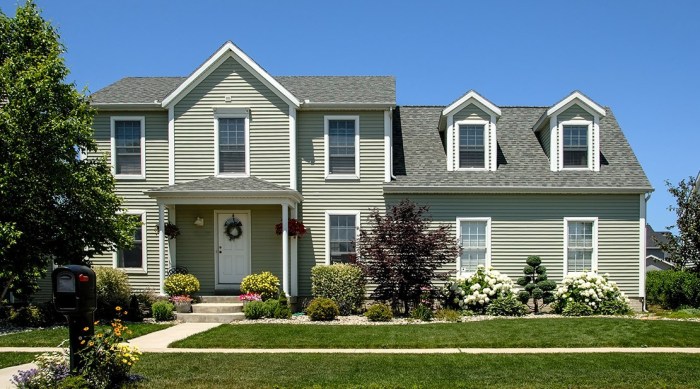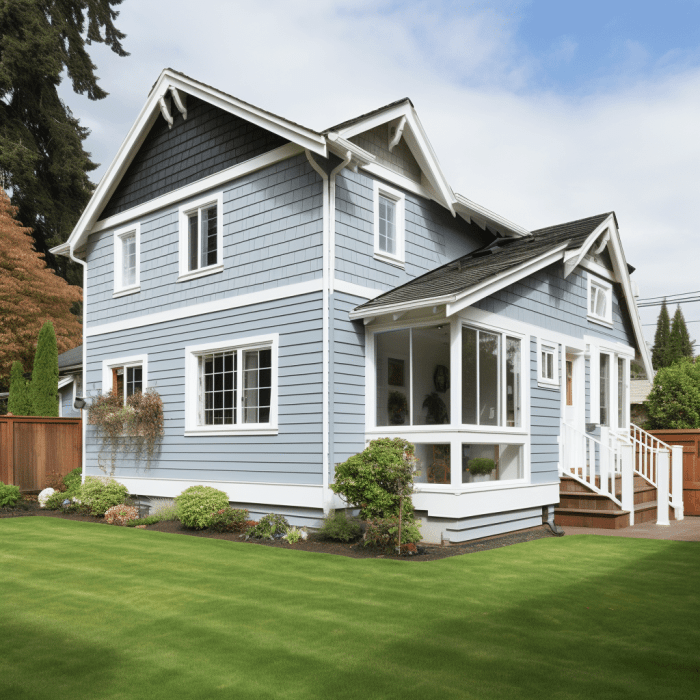Choosing the Best House Siding Companies: A Comprehensive Guide
As house siding companies take the spotlight, this opening passage invites readers into a world of expertise, ensuring a captivating and informative read that is both engaging and informative.
The following paragraphs delve into the various aspects of house siding companies, shedding light on the different materials, considerations, installation processes, and maintenance tips.
Types of House Siding Materials

When it comes to choosing the right siding material for your home, there are several options available. Each type of siding material has its own set of benefits and drawbacks, so it's important to consider your specific needs and preferences before making a decision.
Vinyl Siding
Vinyl siding is one of the most popular choices for homeowners due to its affordability and low maintenance requirements. It comes in a variety of colors and styles, making it versatile for different home designs. However, vinyl siding can crack or fade over time, and it may not be as durable as other materials.
Fiber Cement Siding
Fiber cement siding is a durable and low-maintenance option that is resistant to fire, insects, and rot. It can mimic the look of wood or stucco, providing a high-end appearance for your home. On the downside, fiber cement siding can be more expensive than other materials, and it requires professional installation.
Wood Siding
Wood siding offers a natural and classic look for homes, with options such as cedar, pine, and redwood available. It can be painted or stained to suit your preferences, and it provides good insulation for your home. However, wood siding requires regular maintenance to prevent rot, mold, and insect damage.
Aluminum Siding
Aluminum siding is a lightweight and durable option that is resistant to rust and corrosion. It can be painted in various colors and styles, offering versatility for homeowners. On the downside, aluminum siding can dent easily and may not provide as much insulation as other materials.
Brick Siding
Brick siding is a timeless and durable option that adds a classic look to homes. It is fire-resistant, energy-efficient, and requires minimal maintenance over time. However, brick siding can be expensive to install and repair, and it may not be as versatile in terms of design options.Consider these popular house siding materials when choosing the best option for your home, weighing the benefits and drawbacks of each to make an informed decision.
Factors to Consider When Choosing House Siding
When selecting house siding, there are several important factors to consider to ensure you make the right choice for your home. Factors such as durability, maintenance requirements, cost, and aesthetics play a crucial role in determining the best siding material for your needs.
Durability
Durability is a key factor to consider when choosing house siding. Different siding materials have varying levels of durability, with options like vinyl siding being known for their long-lasting qualities. It is essential to choose a siding material that can withstand the elements in your specific climate to ensure longevity.
Maintenance
The amount of maintenance required for house siding can vary significantly depending on the material. For example, wood siding may require more frequent maintenance, such as painting or staining, compared to vinyl siding, which is low maintenance. Consider how much time and effort you are willing to put into maintaining your siding when making your decision.
Cost
Cost is another crucial factor to consider when choosing house siding. Different siding materials come with varying price points, so it is essential to set a budget and explore options that fit within your financial constraints. Keep in mind that while some materials may have a higher upfront cost, they could save you money in the long run due to their durability and low maintenance requirements.
Aesthetics
The aesthetic appeal of your house siding is also an important consideration. Your siding choice should complement the architectural style of your home and enhance its overall appearance. Consider the color, texture, and style of the siding material to ensure it aligns with your design preferences.
Energy Efficiency
When comparing siding materials, it is essential to consider their energy efficiency. Some siding options, such as insulated vinyl siding or fiber cement siding, can help improve the energy efficiency of your home by providing better insulation. This can lead to lower energy bills and a more comfortable indoor environment.
Matching Siding with Architectural Style
To ensure your house siding enhances the architectural style of your home, consider factors such as the era in which your home was built, its geographical location, and any existing design elements. For example, if you have a traditional colonial-style home, you may opt for clapboard siding, while a modern home could benefit from sleek metal siding.
Installation Process of House Siding

When it comes to installing house siding, there are several key steps involved in the process. From preparation to finishing touches, each step is crucial to ensure a successful installation
Typical Steps in House Siding Installation
- Preparation of the Exterior: This involves cleaning the exterior walls, repairing any damage, and applying a weather-resistant barrier.
- Measurement and Cutting: Accurate measurements are taken to ensure the siding fits properly, followed by cutting the siding material accordingly.
- Installation of Starter Strips: Starter strips are installed at the bottom of the exterior walls to provide a base for the siding panels.
- Placement of Siding Panels: The siding panels are then carefully fitted and secured to the walls, starting from the bottom and working upwards.
- Trimming and Finishing: Any excess siding is trimmed, and finishing touches such as corner pieces and trim are added for a polished look.
Tools and Equipment Required for Siding Installation
- Hammer and nails or nail gun
- Tape measure and level
- Saw or cutting tool suitable for siding material
- Caulk and caulking gun
- Siding clips or brackets
Common Challenges During Siding Installation and Solutions
- Uneven Walls: Walls that are not perfectly straight can make siding installation difficult. Using shims and adjusting the placement of siding panels can help overcome this challenge.
- Mold or Rot: If mold or rot is discovered during installation, it is crucial to address the issue before proceeding. This may involve replacing damaged sections of the wall or treating the affected areas.
- Weather Conditions: Extreme weather conditions can impact the installation process. It is essential to plan the installation during favorable weather and take precautions to protect the siding material from damage.
Maintenance and Repairs for House Siding

Maintaining and repairing house siding is essential to ensure its longevity and keep your home looking its best. By following recommended maintenance tasks and knowing how to spot signs of damage, you can address issues promptly and prevent further deterioration.
Recommended Maintenance Tasks
- Regularly clean the siding with a mild detergent and water to remove dirt, mold, and mildew buildup.
- Inspect the siding for any cracks, chips, or loose panels that may need to be repaired.
- Trim nearby trees and bushes to prevent damage from branches rubbing against the siding.
- Check for signs of moisture infiltration, such as peeling paint or warped siding, and address the underlying issue.
Spotting Signs of Damage or Wear
- Look for discoloration, warping, or bubbling on the surface of the siding, which can indicate water damage.
- Check for any gaps or holes where pests could enter or nesting materials could accumulate.
- Inspect the caulking and seals around windows, doors, and corners for any cracks or gaps that may need to be resealed.
- Observe any areas where the siding is pulling away from the house or showing signs of deterioration.
Repair Options for Different Siding Materials
- Vinyl Siding:Cracks can be patched with caulk, while damaged panels may need to be replaced entirely.
- Wood Siding:Rotting or warped boards should be replaced, and the siding may need to be repainted or stained to protect it from further damage.
- Fiber Cement Siding:Damaged areas can be filled with a patching compound and repainted to match the existing siding.
- Aluminum Siding:Dents or scratches can be repaired with a coat of paint or by replacing the affected panels.
Final Wrap-Up
In conclusion, house siding companies offer a plethora of options to enhance the aesthetics and functionality of your home. By understanding the nuances of siding materials and installation processes, homeowners can make informed decisions to protect and beautify their properties for years to come.
Question Bank
What are the most popular siding materials used by house siding companies?
Common siding materials include vinyl, wood, fiber cement, and aluminum.
How can homeowners match siding with the architectural style of their home?
Consider the architectural style, color palette, and overall aesthetic of the home when selecting siding.
What are the typical maintenance tasks recommended for house siding?
Regular cleaning, inspections for damage, and repainting when necessary can help maintain the lifespan of house siding.




